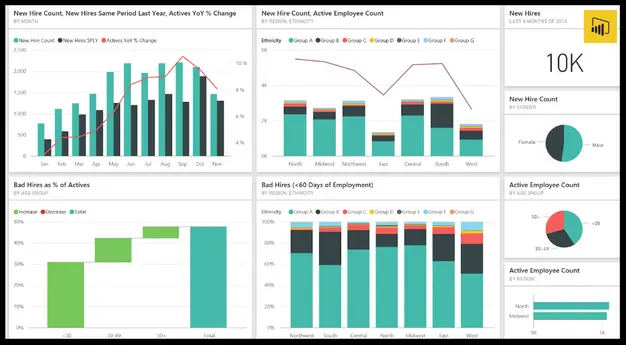
In today’s fast-paced business landscape, making informed decisions based on accurate and timely data is essential. This is where business analytics comes into play. Business analytics can provide valuable insights into various aspects of a company’s operations, such as sales trends, customer behavior, and financial performance. However, it often requires specialized tools and expertise to extract meaningful insights from the vast amount of data that businesses generate.
One such tool that has emerged as a game-changer in the field of business analytics is Power BI. Developed by Microsoft, Power BI is a suite of business analytics tools that allows users to visualize their data and share insights in real-time. Its user-friendly interface and powerful capabilities have made it a popular choice among businesses of all sizes.
One of the key features that sets Power BI apart from other analytics tools is its ease of use. Power BI offers a drag-and-drop interface, which makes it simple for users with little to no coding experience to create interactive visualizations and reports. This means that business users can explore and analyze their data without relying heavily on IT or data analytics teams. This democratization of analytics empowers different stakeholders within an organization to make data-driven decisions, resulting in improved operational efficiency and agility.
Power BI also stands out for its data modeling capabilities. With Power BI, users can connect to a wide range of data sources, including databases, spreadsheets, and cloud services. It can even pull data from multiple sources and combine them into a unified data model. This allows users to gain a holistic view of their business operations by analyzing data from different sources in one place. Moreover, Power BI supports real-time data streaming, enabling businesses to monitor their operations and make informed decisions on the fly.
Another notable feature of Power BI is its robust sharing and collaboration capabilities. Users can publish their reports and dashboards to the Power BI service, making them accessible to colleagues and stakeholders. This enables seamless collaboration and facilitates data-driven decision-making across departments and teams. Moreover, Power BI allows users to embed reports and dashboards in other applications, such as SharePoint and Teams, making it easier to share insights with a wider audience.
Power BI also offers advanced analytics capabilities, enabling users to perform complex calculations and statistical analysis. With its built-in AI capabilities, users can leverage machine learning algorithms to discover patterns and trends in their data. Predictive analytics features, such as forecasting and trend analysis, help businesses anticipate future outcomes and take proactive measures.
Additionally, Power BI integrates seamlessly with other Microsoft products, such as Excel and Azure, as well as third-party applications, through its extensive ecosystem of connectors and APIs. This allows businesses to leverage existing investments in technology and extend the capabilities of Power BI to address specific analytical needs.
In conclusion, Power BI has revolutionized the field of business analytics by providing a user-friendly and powerful toolset to explore and gain insights from data. Its ease of use, data modeling capabilities, sharing and collaboration features, as well as its advanced analytics capabilities, make it a game-changer for businesses. With Power BI, businesses can make data-driven decisions faster, improve operational efficiency, and gain a competitive edge in today’s data-driven world.

Be the first to comment